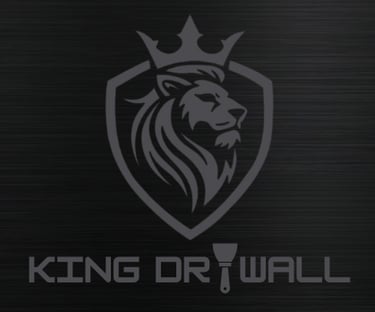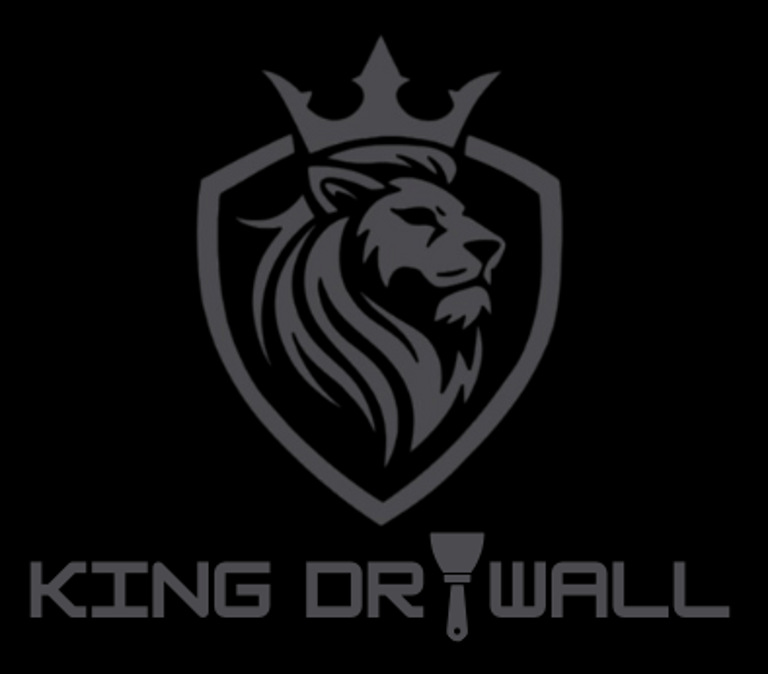CALL TODAY! → (321) 239-5083
The Comprehensive Guide to Drywall Finishing: Taping, Mudding, and Beyond
Smooth walls aren’t a coincidence—they’re the result of expert finishing. Learn how we create seamless, paint-ready surfaces that elevate any space.
7/14/20254 min read


Understanding the Drywall Finishing Process
The drywall finishing process is a critical aspect of interior construction that requires precision and skill to achieve optimal results. It involves several key steps: taping, mudding, and sanding. Each of these steps plays a vital role in creating a smooth and appealing surface suitable for painting or wallpapering.
Taping is the first step in the drywall finishing process. It involves applying a special tape, typically made from paper or fiberglass mesh, over the joints between drywall sheets. This tape helps to bridge the gaps, thus minimizing the risk of cracks and enhancing the structural integrity of the wall. Proper taping techniques are essential; a well-taped joint can significantly contribute to a seamless appearance, providing a solid foundation for the subsequent mudding step.
The next phase, mudding, involves the application of joint compound or mud over the taped joints. This step requires careful application to ensure that the compound fills the gaps and creates a flat surface. Multiple coats of mud may be necessary, with each layer being sanded down before the application of the next. The significance of mudding lies in its ability to conceal imperfections and create a uniform finish. For best results, it is important to utilize the right techniques and tools, as improper mudding can lead to visible seams and uneven surfaces.
Finally, sanding smooths out any remaining rough spots, preparing the walls for paint or other finishes. Achieving a smooth finish through sanding ensures that the visual appeal of the space is maximized, eliminating any imperfections that could detract from the overall design. It is also important to consider regional factors such as humidity, especially in Florida, where excessive moisture can impact drywall quality and finishing. In such environments, using moisture-resistant materials and techniques becomes paramount to achieving long-lasting results.
Exploring Finish Levels: Level 3 vs. Level 5
In the realm of drywall finishing, understanding the differences between various finish levels is paramount for achieving optimal results. The two most commonly referenced standards, Level 3 and Level 5, provide distinct applications and aesthetic outcomes. A Level 3 finish involves the application of joint compound over the taped seams. This level is often suitable for areas where a textured finish will be added, such as in residential spaces where a final texture application obscures minor imperfections. Typically, this finish is sufficient for low-traffic areas, such as attics or basements, where refined aesthetics are less critical.
Conversely, a Level 5 finish represents the highest standard in drywall finishing. In addition to taping and mudding, a Level 5 finish includes a thorough coating of joint compound over the entire surface. This ensures a smooth and flawless appearance, suitable for high-end applications. This finish is particularly recommended in environments with specific lighting conditions, as uneven textures can be accentuated in natural light. Furthermore, Level 5 is advantageous in areas of high traffic or where a polished look is desired, such as commercial spaces, galleries, and modern residences.
The impact of these finish levels on the overall performance and look of drywall cannot be overstated. A Level 5 finish not only provides a superior aesthetic but also enhances the durability of the surface, making it more resistant to damage and wear. This is especially relevant in climates such as Florida’s, where humidity and temperature variations can affect material performance. Understanding the nuances between Level 3 and Level 5 finishes allows homeowners and contractors alike to make informed decisions, ensuring the appropriate finish is selected according to the intended use and environment of the space.
Benefits of Proper Drywall Finishing: Aesthetic and Structural
The process of drywall finishing plays a crucial role in both the aesthetic appeal and structural integrity of interior walls. Proper finishing techniques, which include taping and mudding, create clean, seamless surfaces that significantly enhance the overall appearance of a room. Visually appealing walls not only elevate a space but also contribute to a more polished and professional look, particularly in commercial buildings where first impressions are paramount. Well-finished drywall can create a welcoming environment for clients and guests, fostering a positive experience.
Moreover, adequate drywall finishing serves to prevent long-term defects within the walls. For instance, improper taping can lead to cracks or delaminations that may become more pronounced over time. By ensuring that every layer of the drywall is meticulously finished, property owners can mitigate these issues, thereby enhancing the longevity and durability of the interiors. A well-prepared surface is essential for the subsequent application of paint or texture, as it adheres better and provides a uniform finish. This leads to fewer maintenance needs and reduces the likelihood of touch-ups and repairs in the future.
Financially, investing in quality drywall finishing can yield substantial cost savings over time. Although it may require a higher initial expenditure, the benefits of durability and reduced maintenance often outweigh the costs. Properties with expertly finished drywall are likely to retain a higher market value, making them more desirable should the owner consider selling or renting. Thus, prioritizing the quality of drywall finishing not only enhances the aesthetics of a space but also contributes to the structural longevity, ultimately leading to greater financial returns.
Essential Tips for Achieving Perfect Drywall Finishes
Achieving a flawless drywall finish requires a combination of the right materials, tools, and techniques. To start, selecting high-quality drywall compound is crucial. There are two main types: taping compound, designed for initial application and stronger adhesion, and finishing compound, which is smoother for the final layers. Utilizing a lightweight joint compound can make sanding easier, helping to create a finer finish. Invest in good tape, such as paper or fiberglass mesh, as this will play an integral role in holding the joints together and preventing cracks.
When it comes to tools, a taper knife, mud pan, and a sanding block or pole sander are essential. For larger projects, consider using a drywall hoist to hold the sheets in place, thus allowing greater maneuverability for the taping and mudding process. Additionally, having a range of knives in different widths can enhance your ability to smoothen various areas effectively. As for application techniques, it's beneficial to apply thin layers of compound progressively. Each layer should dry thoroughly before the next is applied. This approach minimizes the chances of cracking and reduces the workload during sanding.
Preparation plays a significant role in drywall finishing. Ensure that the workspace is clean and free from dust, as this can affect adhesion and overall quality. Environmental factors, particularly in regions like Florida, can impose challenges due to humidity and high temperatures. It's advisable to maintain moderate temperature levels in the working area, as this promotes optimal drying conditions. Installing a dehumidifier during the finishing process can also yield favorable results.
By adhering to these essential tips, both DIY enthusiasts and home improvement professionals can produce smooth, high-quality drywall finishes that stand the test of time. Implementing the right techniques and taking the necessary precautions will ensure successful results in any drywall project.
FOLLOW US ON SOCIAL MEDIA
SUBSCRIBE TO OUR NEWSLETTER
CALL:
HOURS:
Available 24/7
COPYRIGHT © 2025 KING DRYWALL SERVICES LLC.


